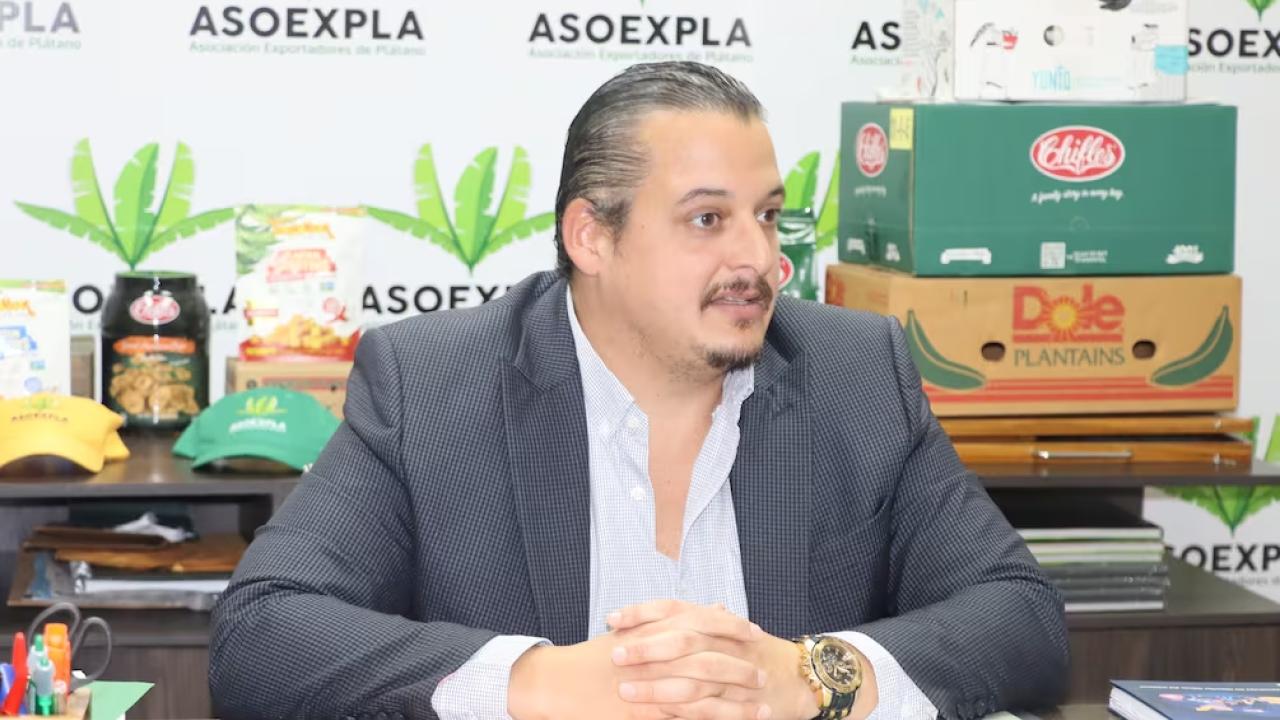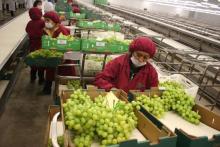
The United States receives 73% of Ecuador's fresh and processed plantain exports (chips, snacks, and others), which have been subject to a 16% tariff since last Saturday.
Processed plantains, along with flowers and broccoli, are among the three Ecuadorian products that pay the most tariffs to enter the U.S. market, after that country began charging a 10% tariff on Ecuadorian imports last Saturday, raising the tariff on plantains to 16%.
Eduardo Manrique, executive director of the Banana Exporters Association (Asoexpla), explains the impact this new tariff has on the sector, which has the U.S. as its main market, receiving 68% of Ecuador's total fresh and processed banana exports.
- How does this new 10% tariff imposed by the US since April 5 affect the competitiveness of processed bananas?
We are directly affected, just like broccoli and flowers, by the tariffs imposed by the United States. We had a 6% tariff, and with this 10% tariff, we now have a 16% tariff.
- How much tariff do Ecuador's competing countries have in the U.S.?
Our main competitors are Guatemala, Honduras, Colombia, and Peru. All of them had 0% tariffs (before the measure), so they now have only 10%. So, obviously, we have 6% more than they have, so compared to our competitors, there would be immediate action.
That's going to be a competitiveness issue... there are two cards on the table. One is the tariff issue: they have 10% and we have 16%, so it's obviously going to be a price and competitiveness issue. The other is that in the case of Central America, Guatemala, and Honduras, they also have another factor in their favor. Not only is there a 6% difference with us, but there's also the logistics issue and obviously lower costs due to the distance. That is, both shipping and everything are closer, so that's another advantage they're already using.
Regarding Colombia, they only have 10% of the market, so it's going to be a strong competitive issue. They haven't said anything yet, but we generally know this will be passed on to the consumer, so what they'll have to do is assume a loss in order to maintain or remain in the market and be competitive.
- How much was processed banana exported to the US in 2024 and so far in 2025 (first quarter)?
In 2024, the United States consolidated its position as the main destination, accounting for 73.13%. A total of 32.17 thousand tons of processed bananas were exported. The FOB value was US$106.37 million.
In January 2025, 3.66 thousand tons were exported to the United States, representing 75.64% of Ecuador's total fresh and processed plantain exports. There was a 47.39% growth in the U.S. market.
- How much has Ecuador's processed plantain exports grown in the U.S. market in recent years?
From 2020 to 2024, processed plantain exports to the United States grew exponentially by approximately 125%, from 14.30 thousand tons to 32.17 thousand tons in 2024.
- How many Ecuadorian companies export processed plantains to the U.S.?
Approximately more than 30 companies export processed bananas to the United States.
- If Ecuador loses market share in the U.S., what other market could be an alternative?
The United States accounts for almost 73% of processed plantains; it would really be difficult, almost impossible, to move that market. It's a consumer market, where plantain chips or frozen plantains, in the different varieties and presentations that exist, are widely consumed, not only by the nostalgic consumer that was once considered the Latino consumer, who mostly consists of 60% of their diet consisting of rice, beans, and green plantains, but also now it's a product considered healthy, alternative, gluten-free , which is becoming a trend in American markets.
So, chips, pastries, and frozen peeled plantains, among other products, are important to Latin American cuisine; it would be very difficult to move that 73% to other markets.
There is the European Union, which represents almost 20%, there are other Latin American markets like Chile and Argentina, but not like the United States.
There are also Asian markets, such as Japan and South Korea, where processed bananas are already exported—a small percentage, but they are exported—and obviously there's the possibility of the Chinese market, but in the case of our specific product, this is a market that's just opening up, where the cultural factor plays a huge role.










